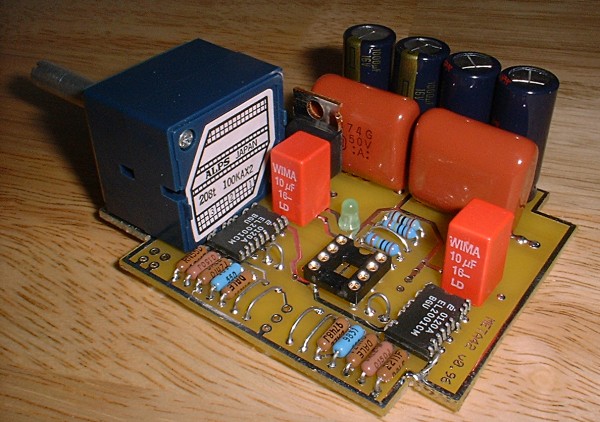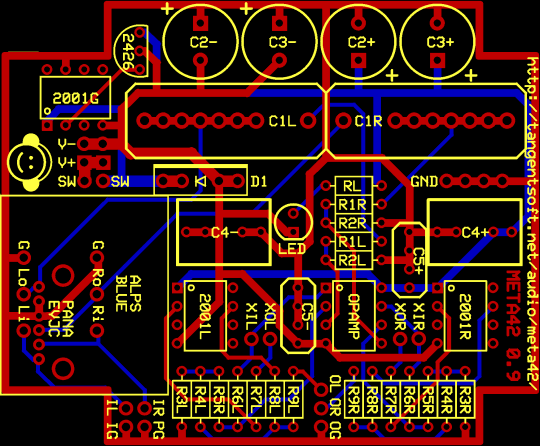tangent
Top Mall-Fi poster. The T in META42.
Formerly with Tangentsoft Parts Store
- Joined
- Sep 27, 2001
- Posts
- 5,970
- Likes
- 58
Just to make sure everyone's clear on this: this trick only works if you use a multiloop configuration, which means you must use the buffers on the outputs, pointless as they may be in the face of the 100mA current drive of the LM6172. Without the multiloop, you get the full 80-100x gain out, which is way too much for headphones. The multiloop configuration lets you kind of cheat -- it bumps the op-amp's gain up for added stability and to get rid of some excessive bandwidth, and yet still lets you keep a reasonable 2-10x total system gain.
I suspect that if you configured the META42 as an über CMoy with a reasonable gain, you'd need to use the feedback path cap, and all the phase shift nastiness that entails.
And you're more than welcome -- I was curious about this, too.

I suspect that if you configured the META42 as an über CMoy with a reasonable gain, you'd need to use the feedback path cap, and all the phase shift nastiness that entails.
And you're more than welcome -- I was curious about this, too.




